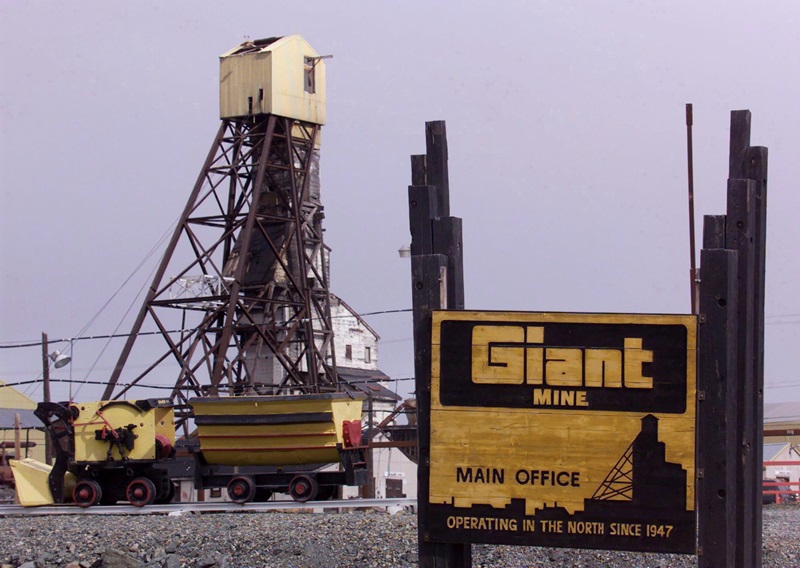Environment commissioner says liability for northern contaminated sites growing

Ottawa’s slow progress to remediate contaminated sites in the North is leaving Indigenous Peoples at risk and raising the government’s own financial liability for the polluted areas, environment commissioner Jerry DeMarco said Tuesday in a new audit.
DeMarco’s probe found that the government’s liability for contaminated sites increased by $7 billion since 2005, when the government launched its plan to remediate and reclaim abandoned mines.
More than 60 per cent of that liability is in the North.
“After 20 years, there is still much work needed to reduce financial liability related to contaminated sites and to lower environmental and human health risks for current and future generations,” said DeMarco.
“As well, the government needs to take urgent action to advance socio-economic benefits, including employment opportunities, and to support reconciliation with Indigenous Peoples whose lands are often affected by contaminated sites.”
DeMarco said at one mine, there is still ongoing work needed to keep contaminated water from leaching into surrounding areas, while another still houses a large volume of arsenic which needs to remain frozen underground.
Most of those sites are on Indigenous land, but DeMarco says Indigenous Peoples are not being fully included in the remediation efforts.
DeMarco called their inclusion in the efforts a “significant opportunity” to support reconciliation and promote economic development.
Related: Canada’s top five federal contaminated sites to cost billions to clean up
He said during remediation work at the Giant Mine near Yellowknife that the department of Crown-Indigenous Relations and Northern Affairs Canada failed to meet employment targets for northern and northern Indigenous workers.
While the department began developing a socio-economic framework for the Faro Mine in south-central Yukon, it failed to complete it.
However, DeMarco said it did exceed internal targets for training of Indigenous Peoples, northerners and women during the pre-remediation work.
DeMarco said Indigenous Peoples expressed concern over the federal government’s handling of projects, saying there has been a lack of meaningful engagement, consultation and consideration of their inputs.
He also found a lack of capacity for the communities and administrative burdens, along with a lack of socio-economic benefits.
“It’s a question of environmental justice in some sense because these communities have absorbed the health and environmental effects of these contaminated sites,” DeMarco said during a news conference Tuesday.
“And now that considerable funds are going to remediate the sites, it seems fair that they should benefit from the economic and social opportunities arising from the cleanups.”
Related: How insurers can trim their environmental remediation costs
He is urging the federal government to “leverage opportunities” with Indigenous Peoples to participate in and benefit from the management of the sites, which Crown-Indigenous Relations and Northern Affairs Canada agreed to do.
Liberal MP Julie Dabrusin, the parliamentary secretary to the environment minister, similarly welcomed that recommendation, saying the federal government “absolutely” needs to continue working with Indigenous Peoples in the region to ensure they have a say in how cleanup is done.
“When we talk about how we go forward on reconciliation, it’s always going to be a work in progress where we keep working to do better,” she said.
“But I think working together on a work plan is one of the most important parts that we have on that.”
Tuesday’s report on contaminated sites came along with four others, including ones on plastics and agriculture.
DeMarco found that waste-reduction efforts in key federal departments were generally working well.
That included efforts by the Fisheries Department, which is meeting its targets to remove lost or discarded fishing gear — also known as ghost gear — from the water.
However, DeMarco said the government doesn’t have clear targets and monitoring systems to know whether it’s on track to meet the goal of zero plastic waste overall.
“Until this is done, they will not know whether they are on track to meeting the goal,” the report said.
DeMarco said tracking is especially important because reaching the goal will require co-ordination from the provinces and territories, municipalities and the private sector.
— With files from Sarah Ritchie in Ottawa.
Feature image: The head frame of the Giant Gold Mine stands high above the ground in Yellowknife Tuesday Aug. 21, 2001. Research has found that levels of toxic arsenic in lakes circling a former gold mine on the outskirts of Yellowknife exceed guidelines for human and environmental safety. It’s another level of complexity to what is one of Canada’s biggest environmental cleanups. About $1 billion in tax dollars is already earmarked to deal with the defunct Giant Mine, where 237,000 tonnes of arsenic sit underground on the shores of Great Slave Lake. THE CANADIAN PRESS/Chuck Stoody







